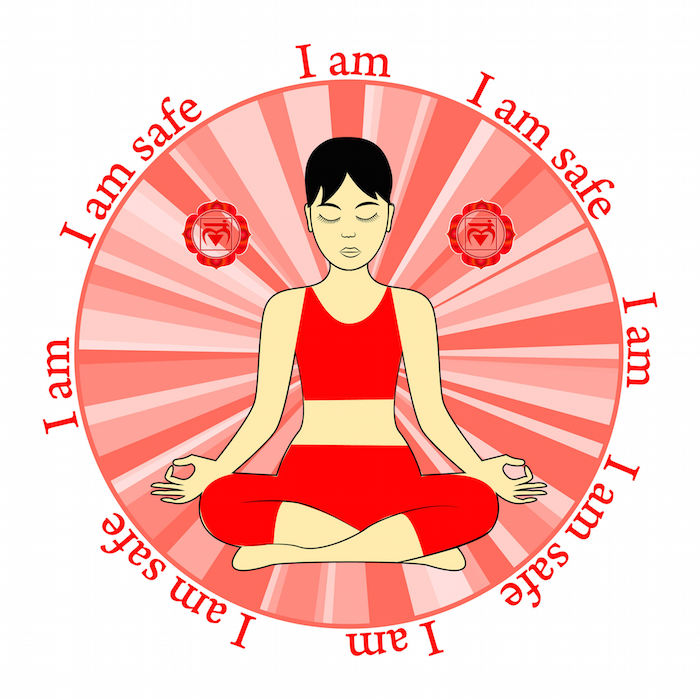If you’ve ever wondered where to begin your chakra healing journey, fret not, for this article has the answer you seek. Discovering which chakra to focus on first can be a daunting task, but fear not, as we guide you through the process of finding your starting point. By understanding the significance of each chakra and its corresponding energy, you’ll be well on your way to balancing and harmonizing your chakra system for a more fulfilling and enlightened life. So grab a cup of tea, get comfy, and let us demystify the path towards healing and self-discovery.
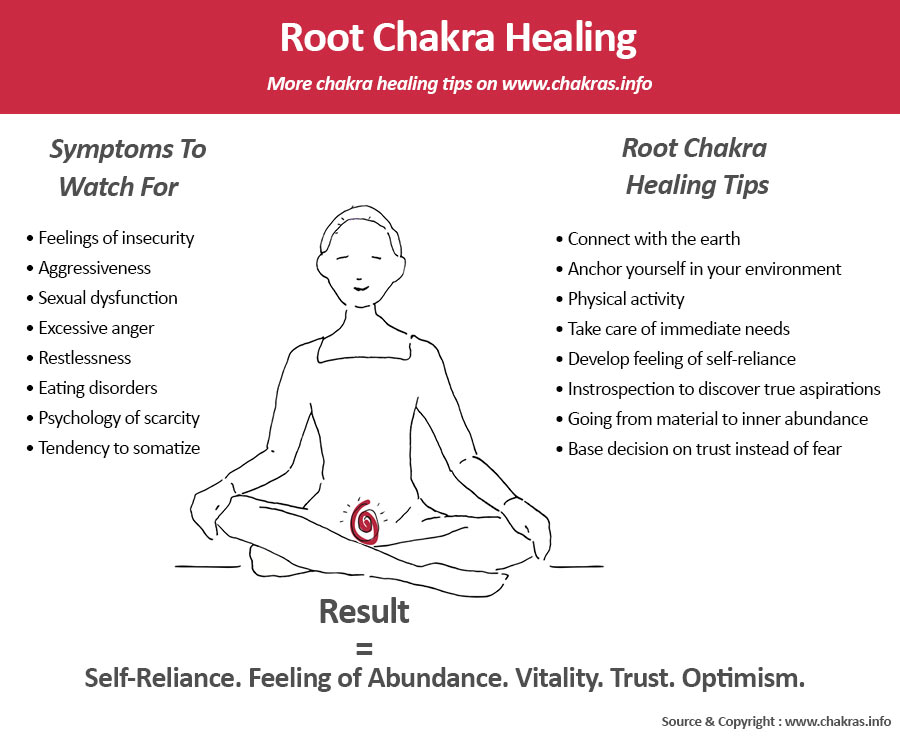
Understanding Chakras
Chakras are energy centers in your body that play a significant role in various aspects of your physical, mental, and spiritual well-being. By understanding and working with your chakras, you can bring balance and harmony to your life. There are seven main chakras, each responsible for different aspects of your being.
Overview of Chakras
Chakras are subtle energy centers that are located along your spine, starting from the base and going up to the top of your head. Each chakra is associated with a specific color, element, and aspect of your life. They are interconnected and influence each other’s functioning. When your chakras are balanced, energy flows freely, promoting a sense of vitality and overall well-being.
Types of Chakras
There are several types of chakras, including primary chakras, secondary chakras, and minor chakras. The primary chakras are the main energy centers that we focus on when working with chakra healing. These are the seven chakras that we will explore in detail.
The Seven Chakras
Root Chakra
The root chakra, also known as the Muladhara, is located at the base of your spine. It is associated with the color red and represents your sense of stability, security, and connection to the physical world. When the root chakra is balanced, you feel grounded, safe, and secure.
Sacral Chakra
The sacral chakra, known as the Svadhishthana, is located just below the navel. It is associated with the color orange and governs your creativity, emotions, and sexuality. When the sacral chakra is balanced, you experience a healthy flow of emotions, creativity, and pleasure.
Solar Plexus Chakra
The solar plexus chakra, also called the Manipura, is located in the upper abdomen. It is associated with the color yellow and represents your personal power, confidence, and self-esteem. A balanced solar plexus chakra empowers you to assert yourself, make decisions, and take action.
Heart Chakra
The heart chakra, known as the Anahata, is located in the center of your chest. It is associated with the color green and represents love, compassion, and forgiveness. When the heart chakra is balanced, you can give and receive love freely, experience emotional balance, and cultivate healthy relationships.
Throat Chakra
The throat chakra, called the Vishuddha, is located in the throat region. It is associated with the color blue and represents self-expression, communication, and authenticity. When the throat chakra is balanced, you can speak your truth, express yourself creatively, and actively listen to others.
Third Eye Chakra
The third eye chakra, known as the Ajna, is located between the eyebrows. It is associated with the color indigo and represents intuition, wisdom, and spiritual awareness. A balanced third eye chakra enhances your intuition, inner knowing, and the ability to perceive beyond the physical realm.
Crown Chakra
The crown chakra, also called the Sahasrara, is located at the crown of your head. It is associated with the color violet or white and represents your connection to the divine, spiritual enlightenment, and unity consciousness. When the crown chakra is balanced, you experience a deep sense of spiritual connection and purpose.
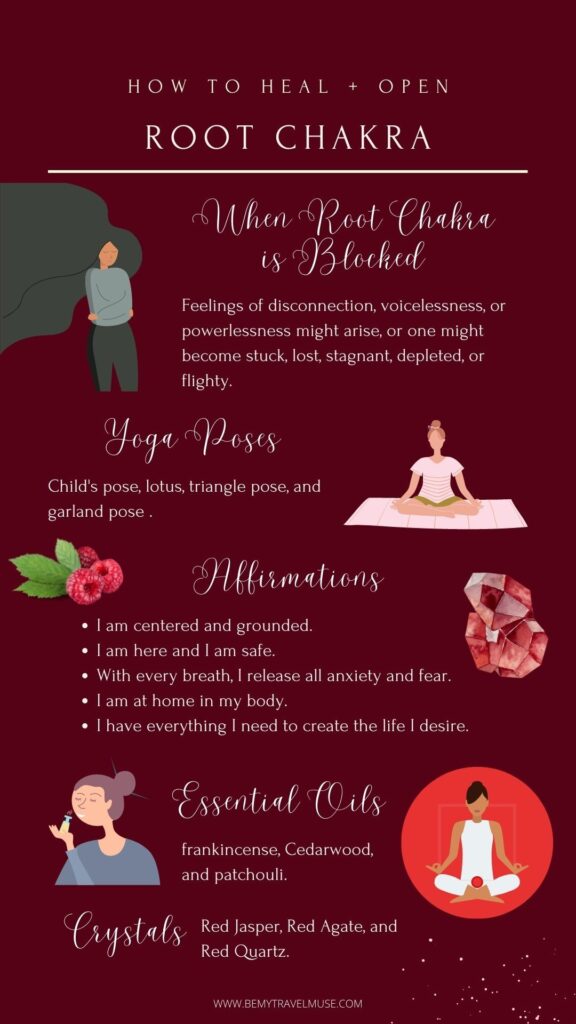
Determining the Chakra to Heal First
Before embarking on your chakra healing journey, it is essential to determine which chakra needs your attention the most. The best way to assess this is through self-assessment and identifying any blockages or imbalances that may be present.
Self-assessment
Begin by taking a moment to reflect on different aspects of your life. Pay attention to your physical, emotional, and mental state. Take note of any areas where you may be experiencing challenges or difficulties. This self-assessment will provide valuable insights into which chakra may require healing.
Identifying blockages or imbalances
During your self-assessment, be mindful of any areas where you may feel stuck, stagnant, or out of balance. These could indicate blockages or imbalances within a specific chakra. For example, if you struggle with feelings of insecurity or lack of stability, your root chakra may be imbalanced.
Physical symptoms
Physical symptoms can also offer clues about which chakra requires healing. For instance, chronic lower back pain may suggest an imbalance in the root chakra, while recurring throat infections may indicate an imbalance in the throat chakra.
Emotional indicators
Examining your emotions can also provide insights. If you frequently experience feelings of guilt, resentment, or inability to forgive, your heart chakra may be imbalanced. If you find it challenging to trust your intuition or lack clarity in decision-making, your third eye chakra may need attention.
Root Chakra
Location and Characteristics
The root chakra is located at the base of your spine, near the tailbone. It is associated with feelings of stability, security, and being grounded in the physical world. The root chakra governs your sense of safety, survival instincts, and connection to the earth.
Common Signs of Imbalance
An imbalanced root chakra may manifest in various ways, such as feelings of insecurity, fear, anxiety, or financial instability. Physical symptoms can include lower back pain, constipation, or issues with the legs, feet, or colon.
Healing Techniques
To heal and balance your root chakra, there are several techniques you can incorporate into your daily routine. These include grounding exercises such as walking barefoot in nature, practicing yoga poses that focus on the lower body, and using grounding crystals like hematite or red jasper.
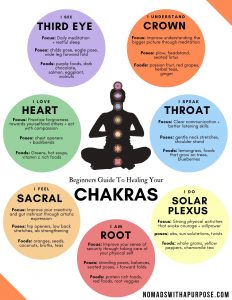
Sacral Chakra
Location and Characteristics
The sacral chakra is located just below the navel, in the lower abdomen. It is associated with creativity, emotions, sensuality, and pleasure. The sacral chakra governs your ability to express your emotions, experience pleasure, and engage in healthy relationships.
Common Signs of Imbalance
Imbalances in the sacral chakra can result in feelings of low creativity, emotional instability, difficulty in expressing emotions, or challenges in forming intimate connections. Physical symptoms may include menstrual problems, low libido, or lower back pain.
Healing Techniques
To heal and balance your sacral chakra, you can explore various practices such as engaging in creative activities, practicing emotional release exercises, or incorporating sensual movement practices like dance or yoga. Using crystals like carnelian or orange calcite can also be beneficial.
Solar Plexus Chakra
Location and Characteristics
The solar plexus chakra is located in the upper abdomen, just below the ribcage. It is associated with personal power, confidence, and self-esteem. The solar plexus chakra governs your ability to assert yourself, make decisions, and take action.
Common Signs of Imbalance
Imbalances in the solar plexus chakra can manifest as low self-esteem, lack of self-confidence, or feeling powerless. You may struggle with making decisions or asserting yourself in various situations. Physical symptoms can include digestive issues, stomach ulcers, or weight fluctuations.
Healing Techniques
To heal and balance your solar plexus chakra, you can practice affirmations that boost self-confidence, engage in activities that empower you, and practice deep belly breathing exercises. Using crystals like citrine or tiger’s eye can also support the healing process.
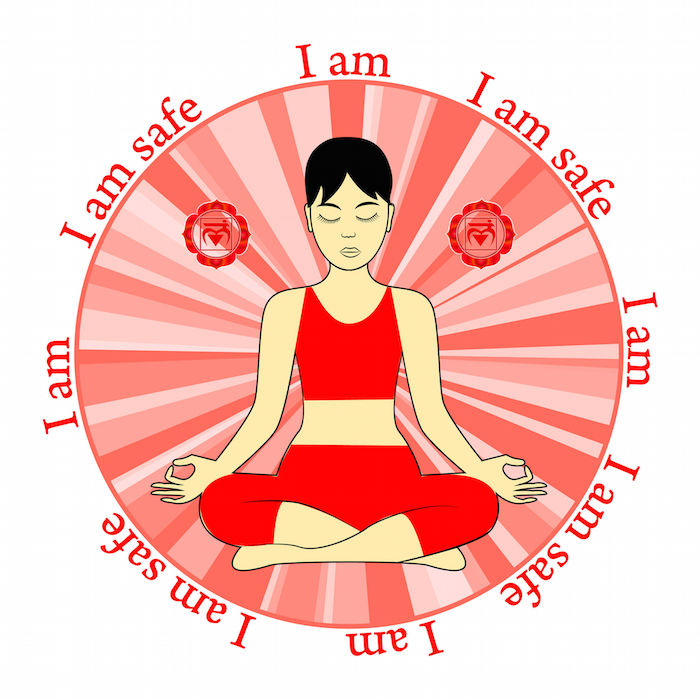
Heart Chakra
Location and Characteristics
The heart chakra is located in the center of your chest, near your heart. It is associated with love, compassion, forgiveness, and emotional well-being. The heart chakra governs your ability to give and receive love, form healthy relationships, and cultivate empathy.
Common Signs of Imbalance
An imbalanced heart chakra can result in difficulties in forming deep connections, feelings of isolation or bitterness, or trouble with forgiveness. Physical symptoms may include heart-related issues, respiratory problems, or high blood pressure.
Healing Techniques
To heal and balance your heart chakra, you can engage in acts of self-love and self-care, practice forgiveness, and cultivate compassion towards yourself and others. Heart-opening yoga poses, such as the camel pose or the cobra pose, can be beneficial. Crystals like rose quartz or green aventurine can also aid in the healing process.
Throat Chakra
Location and Characteristics
The throat chakra is located in the throat region. It is associated with self-expression, communication, and authenticity. The throat chakra governs your ability to communicate effectively, express yourself creatively, and actively listen to others.
Common Signs of Imbalance
Imbalances in the throat chakra can manifest as difficulties in speaking your truth, fear of public speaking, or feeling unheard or misunderstood. Physical symptoms may include throat infections, thyroid issues, or issues with the neck or shoulders.
Healing Techniques
To heal and balance your throat chakra, you can engage in practices such as throat chakra affirmations, singing or chanting, or writing and journaling. Practicing active listening and expressing your thoughts and feelings openly can also be helpful. Using crystals like lapis lazuli or aquamarine can support the healing process.
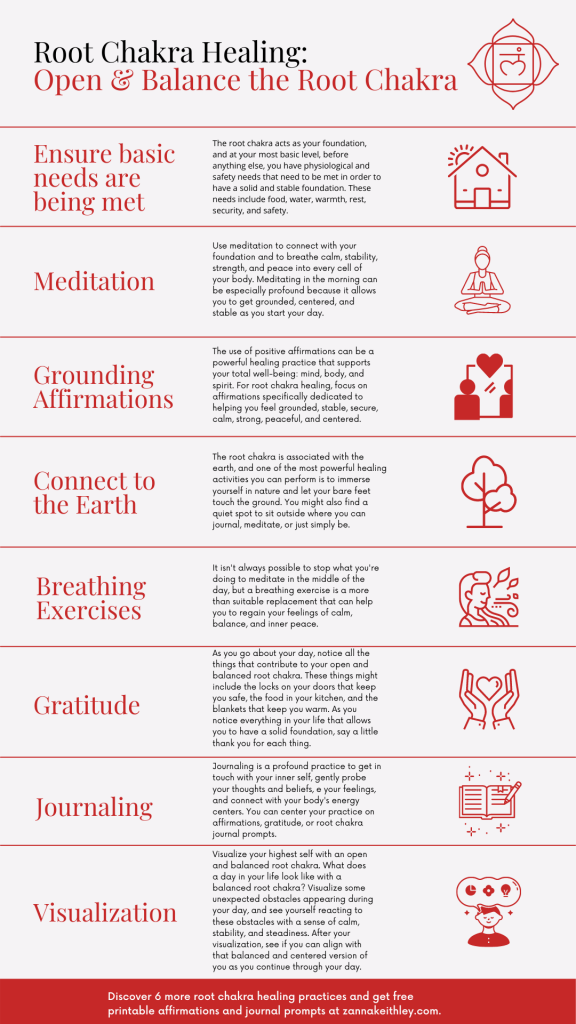
Third Eye Chakra
Location and Characteristics
The third eye chakra is located between the eyebrows, in the center of the forehead. It is associated with intuition, wisdom, and spiritual awareness. The third eye chakra governs your ability to trust your instincts, tap into your inner wisdom, and perceive beyond the physical realm.
Common Signs of Imbalance
Imbalances in the third eye chakra can manifest as difficulty trusting your intuition, lack of clarity, or feeling disconnected from your higher self or spiritual aspects. Physical symptoms may include headaches, sinus issues, or vision problems.
Healing Techniques
To heal and balance your third eye chakra, you can practice meditation or visualization exercises, engage in activities that enhance your intuition, or surround yourself with the color indigo. Using crystals like amethyst or clear quartz can also aid in the healing process.
Conclusion
Understanding and working with your chakras is a powerful way to bring balance and harmony to your life. It is important to remember that all seven chakras are interconnected and influencing each other’s functioning. While it may be helpful to determine which chakra needs your attention first, it is essential to address imbalances in all chakras to achieve overall well-being.
If you are new to chakra healing or feel overwhelmed, seeking professional guidance from an energy healer, Reiki practitioner, or holistic therapist can provide valuable support and guidance throughout your healing journey. With time, practice, and patience, you can cultivate a deeper understanding and connection with your chakras, ultimately leading you towards a more balanced and fulfilling life.
